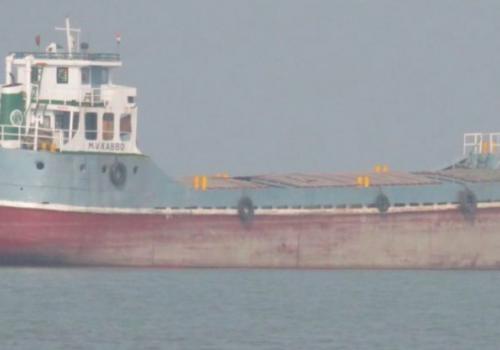Earlier this year, on April 9, when a ship full of fly ash collapsed in river Hooghly near Kulpi in West Bengal’s South 24 Parganas area, a cloud of grey dust enveloped the nearby village of Tangrachar. For days, the nauseating smell of carbon remained infused in the air, said Bappa Dulai, a fisherman in the area. It took about ten days to clear the mound of ash floating on the river, but the shipwreck became a permanent fixture. A pool of fuel and coal dust formed at the bottom of the wreck kept polluting the water, killing fish and other aquatic creatures, said Dulai. Several fishermen lost their fishing nets, as they got entangled in the wreckage. On the same day, barely 30 kilometres apart, another ship carrying fly ash collapsed at Kachuberia, a ferry terminal in Sagar Island in the same district.
Both Kachuberia and Kulpi fall in the Sundarbans, a part of the world’s largest delta formed by the confluence of the rivers Ganga and Brahmaputra in the Bay of Bengal region. In 2020, according to a report, five ships carrying fly ash containers to Bangladesh collapsed in the region. In the last two years, the total number stands at eight. Fly ash is a highly toxic substance known for causing health and environmental problems. It can contain lead, arsenic, mercury, cadmium, and uranium, according to the Canada-based University of Calgary. When fly ash containers tumble in water bodies they contaminate aquaculture and may leach into landmasses, leading to toxicity of agricultural land and drinking water. This toxic substance, however, is a big item of trade between India and Bangladesh. New waterways and rising export
Fly ash is a byproduct of pulverised coal or coal dust in power generating plants and is being increasingly used as a substitute for cement in making bricks. But there are limits to fly ash usage because, in concrete structures, not more than 30 percent of cement can be substituted by fly ash. In India, the disposal of fly ash is a serious issue as more than 20% of fly ash generated in the country remains unutilised, according to data from the Central Electricity Authority (CEA). Every year, India exports three Million Tons (MT) of fly ash to Bangladesh, where it is used in cement factories.
In May 2020, India signed a treaty with Bangladesh, which would further boost the trade of fly ash between the two countries. Under this, the number of Indo Bangladesh Protocol (IBP) routes, or the permitted water routes between the two countries increased from eight to 10. About 97 percent of waterway traffic from India and Bangladesh is for fly ash transportation, according to data from the Federation of Indian Export Organisation (FIEO). Between 2017-18 and 2019-20, there was about a 27% increase in cargo traffic from India to Bangladesh via water route, from 3.09 million MT in 2017-18 to nearly four million MT in 2019-20. West Bengal, which has a substantial number of thermal power plants, is the second-largest producer of fly ash in the country. It produced nearly 15 million tons of the total ash produced in the first half of 2019-20, according to data from CEA. “India wants to dump its fly ash in Bangladesh, and this is clearly environmental racism. The opening up of more routes would mean increased traffic. Its transportation from India to Bangladesh is a big concern because of the fragile ecosystem of the Sundarbans,” Sharif Jamil, Buriganga Riverkeeper and general secretary of Bangladesh Poribesh Andolon (BAPA), an organisation involved in environmental conservation, told Mongabay-India.
